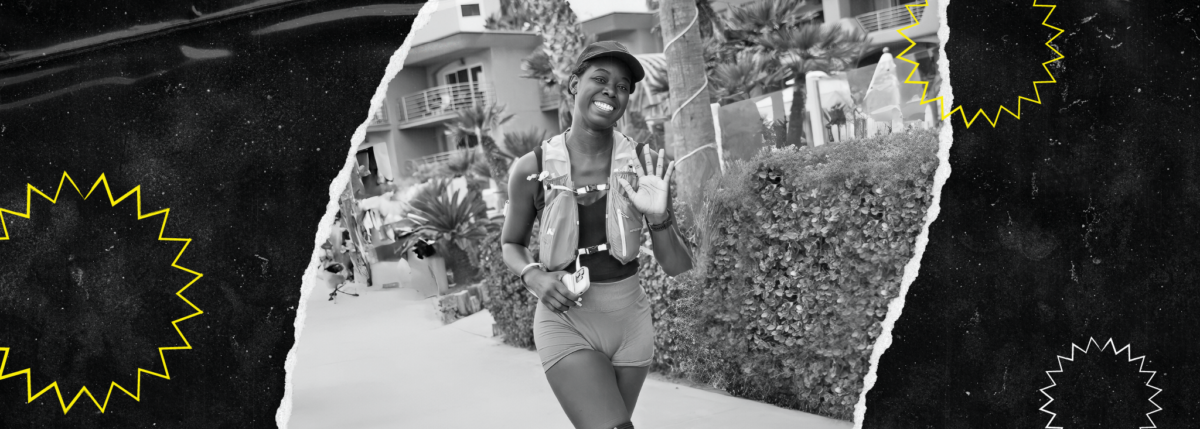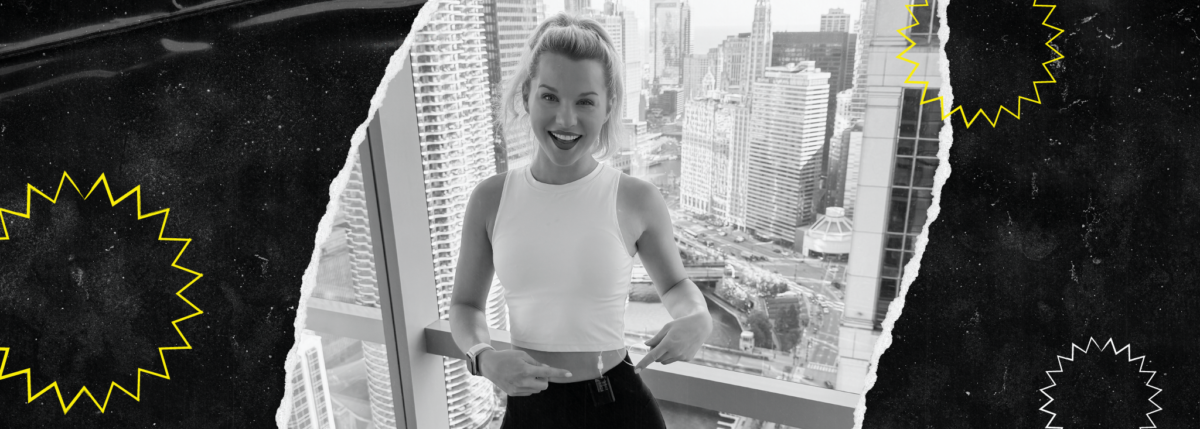Saving My Own Life: A Story of Diabetes + Depression
Written by: Jiggy Yoon
5 minute read
July 9, 2018
TRIGGER WARNING: This piece contains sensitive content regarding depression and suicide.
Unfortunate timing
When I was a senior in high school at 17, there was a period I had to live on my own in a Queens, NY apartment. At that time, my mother had survived a heart attack and went through surgery. Shortly after, my apartment building endured a five-alarm fire and we lost everything that day. Since then, I’d lived in a couple different Red Cross shelters, a Days Inn and some random studio apartment in Brooklyn. By “Brooklyn,” I don’t mean the Brooklyn you see on Instagram. By “Brooklyn,” I mean it’d be safer for me to stay locked inside. “Think more positively,” I’d been told a lot. Okay—so, I’d joke and say that the fire helped me pack a lot lighter for me to move out of state for college, but quite honestly, losing a place to call home and losing everything I held so close to my heart was one of the most soul crushing things I’d experienced. Soon after was when we found out that my mother had cancer. She passed away a few years later.
During my second semester of my freshman year in college, I started noticing some changes. My skin was so dry no matter how much lotion I put on, I was always so thirsty that I’d drink the water while I was in the shower, and I’d constantly wake up throughout the night to go to the bathroom. I made an appointment to see the doctor to test for diabetes and, sure enough, “Yep, you’ve got a sugar problem,” is what I was told. I called my mom from the doctor’s office crying, and she started yelling at me: “How are we going to pay for the medical bills? What are you doing away in college? What are you eating? Why are you so irresponsible?” Not much of a difference from my brother either: “Why didn’t you listen to mom? Why didn’t you take the medicines she told you to take?” No matter how much I tried to explain the difference between type 1 and type 2 diabetes, it just didn’t seem to matter. Did I mention I come from a super traditional Korean family and there is almost no such thing as emotional intelligence? No crying allowed. Just straight A+’s. At this point, my A1C might as well be a 4.0, too.
Just alone
Cool, so I had to do this on my own. The doctor told me I needed to go to the ER. It would be my first time staying overnight at a hospital. My friends came to visit, and one stayed overnight with me. The next day, the nurse wouldn’t let me leave until she saw that I knew how to inject myself with a syringe. “Why me?” Of course I asked that question just like any other newly diagnosed type 1 did. I remember just holding that syringe near my arm and staring at it. My mind was flooded with, “This is my life now,” “I can’t believe I have to do this every day for the rest of my life,” and “My life will never be the same.” There goes my first injection.
Moving forward, I had to set up my own health insurance and wake up at 6 a.m. to make phone calls and “be the next caller in line” before I had to leave for class. I took the bus every time I had to see the doctor. Every choice I made for my health had to be my own with no advice or comfort from anyone, which made things scary sometimes. When my health insurance gave me difficulty getting certain supplies, I’d have to go a few days without them and stress about it or use the same syringe more than once. Social media was just getting going then, so it’s not like I knew any other type 1s, let alone ones who’d be able to donate their supplies to me.
The stress and sadness of life and diabetes stacked up pretty quickly. With my depression and the sensitivity of my triggers, suicidal thoughts are my first initial reaction to situations, almost always—even to this day. I couldn’t understand these 200, 300 numbers and what I was doing wrong that was affecting them. The sting of fingerpricks and injections, the frustration of seeing a number I didn’t want to see, the lows in the middle of a workout or the middle of the night—it all really annoyed me. I was also really passionate about bodybuilding at the time, and the sudden weight gain messed with my mentality. Further, with life after losing my apartment, my dorm rooms became my new home and, for holidays or summer breaks, I had to live in strangers’ basements. I’d have to walk blocks and blocks to do laundry, I was grocery shopping at the dollar store, and I had no kitchen and ate every meal out of the microwave. The food was just okay, but really I was just losing my appetite for life.
With the life I was living and the challenges I’ve faced, my thoughts at the time became, “Clearly, somebody doesn’t want me to live and gave me this disease. Clearly, somebody wants me to give up. Clearly, somebody created my life to have something to laugh at. Clearly, these supplies in front of me can help me end it all.” What happened next—I don’t know. I wasn’t really thinking. I blacked out and everything was autopilot. I was alone in my dorm room, and I injected plenty of insulin and went to bed—or tried. The shaking, the sweating, and the heavy breathing—I couldn’t go through with it. I had to wake up. I hated my diabetes. It was a constant reminder that I hated my life. But if I couldn’t even go through with the attempt of ending everything, it looked like I had to stay.
Embracing it

A friend of mine with type 1 diabetes (T1D) once told me that we are our own superheroes. We choose to treat our blood sugars, which means, we choose to save our own lives every day. We choose to educate ourselves and we choose to not give up, no matter how hard it gets. Everyone experiences diabetic burnout once, twice, or plenty of times. Yet still, we make the choice. We choose life.
I’ve made the decision to embrace my diabetes, to love my diabetes. I had to tell myself, “This isn’t my fault. I didn’t do anything to deserve it. This isn’t a punishment or a consequence. It’s just another part of my story. There is a reason for this. There is a reason for everything.”
So, what does embracing my diabetes look like for me? It means paying attention to what I eat. Testing rather than guessing, no matter what I fear the number to be. Staying calm during my lows. Starting to care about my A1C and adjust my lifestyle consciously to achieve a better number each time. I used my diabetes as a motivation to push myself and defy odds rather than as an excuse to hold me back and limit my capabilities. I started talking and sharing about it more. I also stopped saying “sorry” to others for having to take out my syringes or having to stop what I’m doing to treat a low. Thanks to social media, I’ve also been able to get involved with some great organizations, attend meet-ups, participate in panels and make new friends around the world.
Life with type 1 diabetes isn’t easy. It’s absolutely exhausting, mentally and emotionally. It’s not just the diabetes we’re living with; it’s everything else that comes with it that holds so much weight. But I also love all of us for being able to take this difficult thing and make something beautiful out of it. The level of empathy and generosity in our community is beyond describable. How is it that I can meet up with a complete stranger at her house so she can give me some of her son’s Dexcom supplies or receive a package of some syringes and a vial of insulin from someone I’ve never met? Again, this life isn’t easy, but you all make it so beautiful.
Ripple effect
The other day, I read a post on a type 1 diabetes support group on Facebook by a woman whose husband had attempted suicide the night before by overdosing on his insulin. Thankfully, she caught him at the right time, as he was still alive. She said she had no idea that he was depressed and had no idea that he wanted to end his life. Below the post, there were numerous comments of compassion and empathy, with some people sharing their own suicide attempts. The thing about depression and suicidal tendencies is that, well, we don’t talk about it, and we all have individual reasons as to why. Let’s not forget that there have been numerous studies done to observe the relationship between type 1 diabetes and depression, and the results showed that people living with type 1 diabetes do, in fact, have a higher risk of suicide than the general population. So, what can we do?
My answers are “I don’t know” followed by “everything it takes.” Resources like hotlines and therapy are great, but I also deeply believe in the power of empathy within authentic human connections. I believe social media can be used for the good, to raise awareness and to offer companionship. Healing for mental health, just like diabetes, doesn’t have a one-size-fits-all solution. Everyone’s stories are unique and should be honored as such. We are our own superheroes, yes, and we are also each other’s inspiration. The type 1 diabetes community truly is a family and, just as we have put our efforts together to fight the cost of insulin, I hope we can also come together with compassion and listening for one another. I owe my life to you, person reading this. Thank you for your time, thank you for your heart, thank you for being here.
For more information on suicide risks with type 1 diabetes, and how to seek help click here.

Author
Jiggy Yoon
Jiggy Yoon is a daughter, a sister, a kickass girlfriend, an overprotective best friend, a person with type 1 diabetes, an athlete, an inspirational speaker, an emotional intelligence / mental strategy coach, the founder of the Vulnerability Is Dope™ initiative, and a spoiling mother to her puppy (Joey) and kitty (Phoebe).
Related Resources

Danica Collins not only prepared for one of the most challenging physical events of her...
Read more

Beyond Type 1 is spotlighting inspiring athletes with type 1 diabetes as they prepare for...
Read more

On November 3, 2024, Taylor Rindfleisch of Chicago laced up her running shoes for the...
Read more

